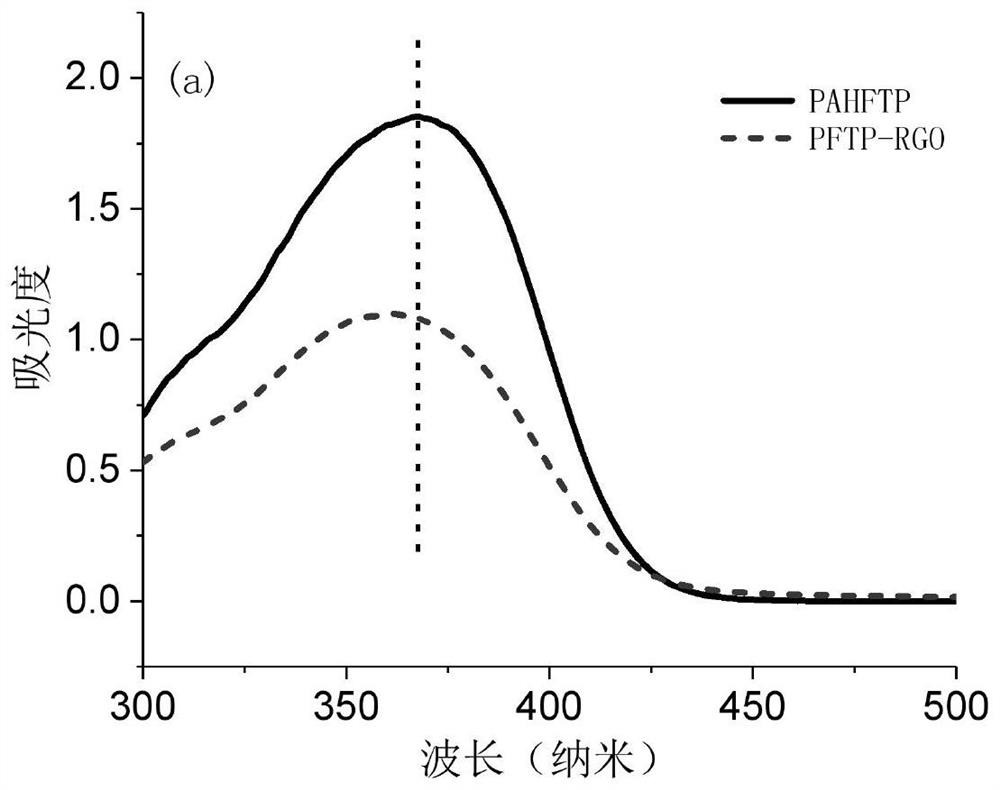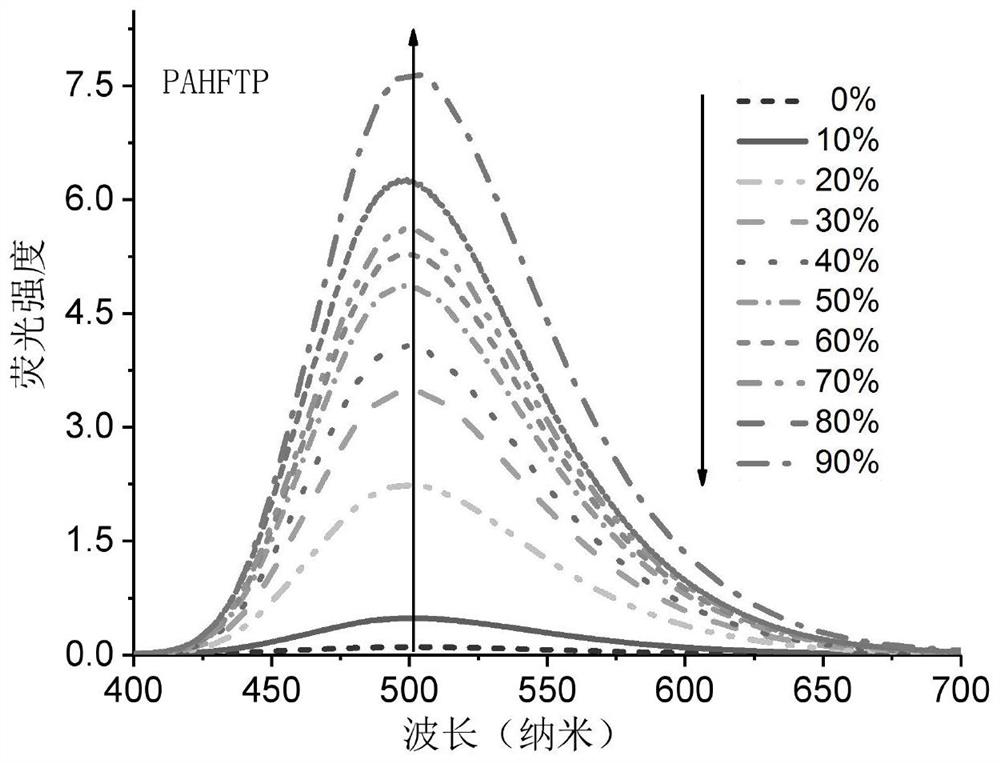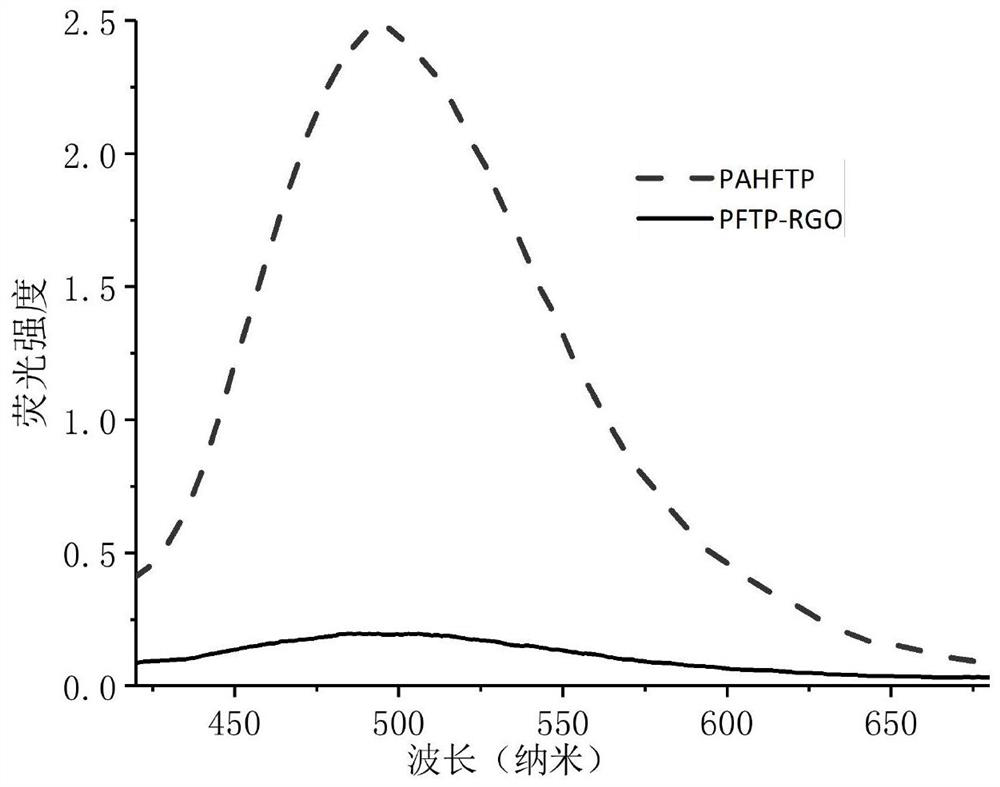A method for preparing a solid-state thin-film optical limiter from a covalently modified graphene composite material with aggregation-induced luminescent properties
A technology of aggregation-induced luminescence and covalent modification, which is applied in the direction of luminescent materials, chemical instruments and methods, instruments, etc., can solve the problems of limited practical application of graphene materials, poor solubility and processability, and easy accumulation of RGO sheets cluster aggregates etc.
- Summary
- Abstract
- Description
- Claims
- Application Information
AI Technical Summary
Problems solved by technology
Method used
Image
Examples
Embodiment 1
[0061] Example 1: A specific synthesis method of a polymer with aggregation-induced luminescence properties and a covalently modified graphene material with aggregation-induced luminescence properties:
[0062] 1) Synthesis of Compound 1: Tetrabutylammonium bromide (900 mg, 2.79 mmol) and aqueous sodium hydroxide solution (250 ml, 50% wt) were added to a 500 mL round bottom flask. After heating the mixture to 75° C., 1,6-dibromohexane (67.8 g, 277.9 mmol) and 2,7-dibromofluorene (9.72 g, 30 mmol) were added to the mixture, respectively. After stirring at 75°C for 2 hours, the mixture was cooled to room temperature and extracted with dichloromethane, and the organic layers were combined. Wash three times with deionized water and hydrochloric acid solution (0.1M). Then dry over anhydrous MgSO4. After filtration and solvent evaporation, excess 1,6-dibromohexane was distilled off under reduced pressure using a vacuum pump. Then the crude product was filtered and purified by sil...
Embodiment 2
[0068] Example 2: A specific synthesis method for preparing a solid-state thin-film optical limiter by using a polymer covalently modified graphene composite material with aggregation-induced luminescent properties:
[0069] Step 1)-6) is the same as above;
[0070] 7) Take 10g of PMMA powder and 100ml of NMP into a narrow-mouth bottle, and dissolve the PMMA powder completely by ultrasonication. During the ultrasonication process, use a glass rod to stir once every half an hour to prevent PMMA from settling and forming a jelly until the PMMA solution is clear and transparent. Record the PMMA solution as solution A. Such as Image 6 shown.
[0071] 8) Dissolve 10mg of the composite material PFTPE-RGO into 10ml of NMP, and the solution of the sample is designated as solution B. Take 5ml of solution A and add it to the vial below, then take 1ml of solution B and add it to the vial. Sonicate the vial for about half an hour to mix the solution evenly and remove air bubbles in t...
PUM
 Login to View More
Login to View More Abstract
Description
Claims
Application Information
 Login to View More
Login to View More - R&D Engineer
- R&D Manager
- IP Professional
- Industry Leading Data Capabilities
- Powerful AI technology
- Patent DNA Extraction
Browse by: Latest US Patents, China's latest patents, Technical Efficacy Thesaurus, Application Domain, Technology Topic, Popular Technical Reports.
© 2024 PatSnap. All rights reserved.Legal|Privacy policy|Modern Slavery Act Transparency Statement|Sitemap|About US| Contact US: help@patsnap.com










